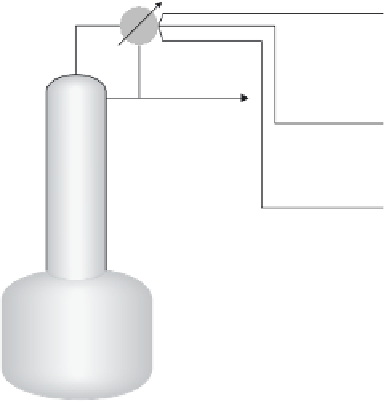Information Technology Reference
In-Depth Information
11.6 BatchSep
Batch distillation is commonly used in processing specialty chemicals and pharmaceuti-
cals and has a substantial role in the chemical industries. Aspen Plus's batch distillation
block is BatchSep. The equations describing batch distillation are very similar to those
describing steady-state distillation; however, the material and energy balances are time
varying, and therefore differential equations are required. An example of a differential
material balance analogous to equation (11.3) is
d(x
i
ρ
M
j
)
dt
=
z
i
F
j
+
y
j
+
1
+
x
j
−
1
−
x
i
L
j
−
x
i
S
j
V
j
+
1
L
j
−
1
−
y
i
V
j
(11.16)
i
i
Here the alternative form of the material balance is used, with the independent variables
being mole fractions and total flows. If
M
j
is the volumetric stage holdup and
ρ
is
the molar density, equation (11.16) results. Similarly, a differential energy balance
analogous to equation (11.6) is
d(
ρ
M
j
c
p
T)
dt
=
H
F
F
j
+
HV
j
+
1
+
hL
j
−
1
−
HV
j
−
hL
j
−
hS
j
+
Q
(11.17)
For an
n
-component column, there are
n
differential material balances and one
differential energy balance per stage. Additionally,
n
nonlinear algebraic equations
describing phase equilibrium and the auxiliary summation of vapor and liquid mole
fractions equations are also required per stage. This large set of combined differential
and nonlinear equations can be solved numerically. Initial conditions are required for
all the variables described in differential equation terms. Targets during the distillation,
such as overhead temperature, are used to identify the beginning and end of a cut, and
receivers must be defined for the collection of each cut produced.
2
3
4
B1
5
1
Figure 11.27
Batch distillation column.


















